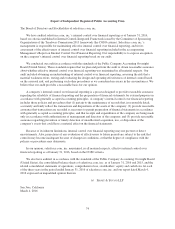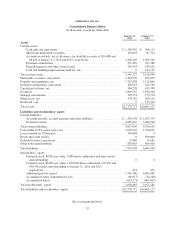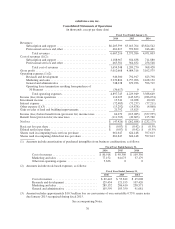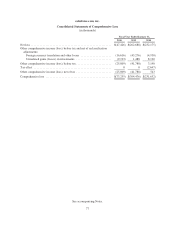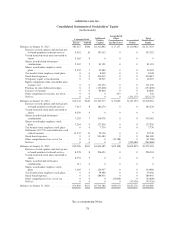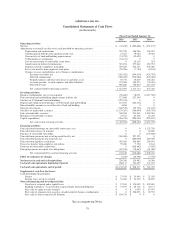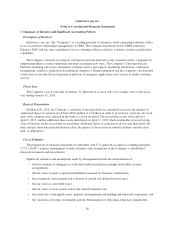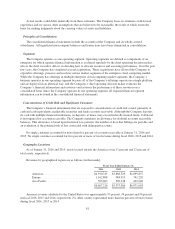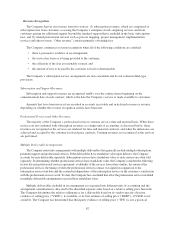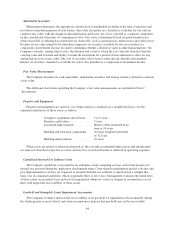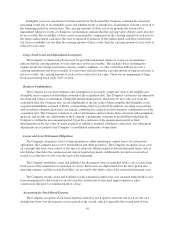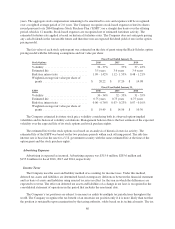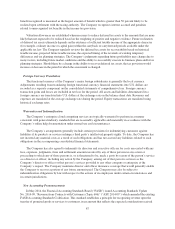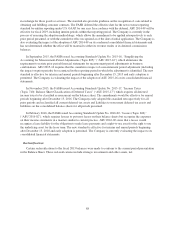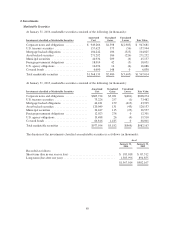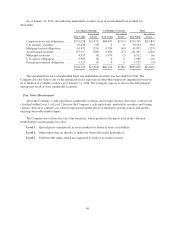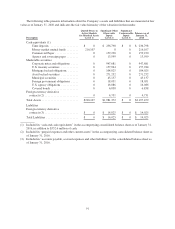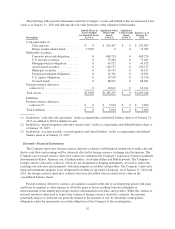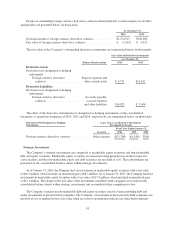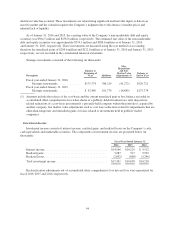Salesforce.com 2016 Annual Report Download - page 91
Download and view the complete annual report
Please find page 91 of the 2016 Salesforce.com annual report below. You can navigate through the pages in the report by either clicking on the pages listed below, or by using the keyword search tool below to find specific information within the annual report.Marketable Securities
Management determines the appropriate classification of marketable securities at the time of purchase and
reevaluates such determination at each balance sheet date. Securities are classified as available for sale and are
carried at fair value, with the change in unrealized gains and losses, net of tax, reported as a separate component
on the consolidated statements of comprehensive loss. Fair value is determined based on quoted market rates
when observable or utilizing data points that are observable, such as quoted prices, interest rates and yield curves.
Declines in fair value judged to be other-than-temporary on securities available for sale are included as a
component of investment income. In order to determine whether a decline in value is other-than-temporary, the
Company evaluates, among other factors: the duration and extent to which the fair value has been less than the
carrying value and its intent and ability to retain the investment for a period of time sufficient to allow for any
anticipated recovery in fair value. The cost of securities sold is based on the specific-identification method.
Interest on securities classified as available for sale is also included as a component of investment income.
Fair Value Measurement
The Company measures its cash equivalents, marketable securities and foreign currency derivative contracts
at fair value.
The additional disclosures regarding the Company’s fair value measurements are included in Note 2
“Investments”.
Property and Equipment
Property and equipment are stated at cost. Depreciation is calculated on a straight-line basis over the
estimated useful lives of those assets as follows:
Computer, equipment and software . . . 3 to 9 years
Furniture and fixtures .............. 5years
Leasehold improvements ........... Shorter of the estimated lease
term or 10 years
Building and structural components . . . Average weighted useful life
of 32 years
Building improvements ............. 10years
When assets are retired or otherwise disposed of, the cost and accumulated depreciation and amortization
are removed from their respective accounts and any loss on such retirement is reflected in operating expenses.
Capitalized Internal-Use Software Costs
The Company capitalizes costs related to its enterprise cloud computing services and certain projects for
internal use incurred during the application development stage. Costs related to preliminary project activities and
post implementation activities are expensed as incurred. Internal-use software is amortized on a straight-line
basis over its estimated useful life, which is generally three to five years. Management evaluates the useful lives
of these assets on an annual basis and tests for impairment whenever events or changes in circumstances occur
that could impact the recoverability of these assets.
Goodwill and Intangible Assets Impairment Assessments
The Company evaluates and tests the recoverability of its goodwill for impairment at least annually during
the fourth quarter or more often if and when circumstances indicate that goodwill may not be recoverable.
84


